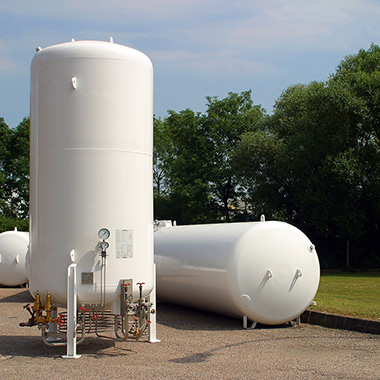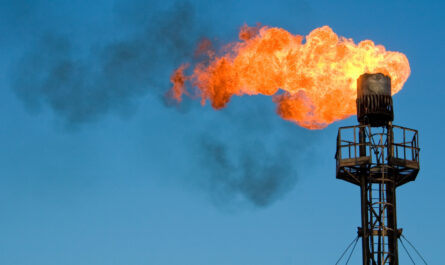Cryogenic tanks have emerged as one of the most critical equipment used across modern industries for safe transportation and storage of cryogenic liquids and gases. With the rapid advancements in science and technology, cryogenic liquids such as liquefied natural gas (LNG), liquefied petroleum gas (LPG), liquid oxygen, liquid nitrogen etc. are extensively used across various industrial sectors.
History and Development of Cryogenic Tanks
Cryogenic tanks were first introduced in the early 20th century when the cryogenic industry started taking shape. Researchers and engineers invested efforts to develop specialized vessels that could safely store cryogenic liquids at extremely low temperatures. The early cryogenic tanks were basic in design with limited storage capacity and cryogenic insulation. Over the decades, advancement in materials and thermal insulation technologies have played a key role in optimizing the design of cryogenic tanks. Today’s cryogenic tanks are highly sophisticated vessels capable of withstanding extreme cryogenic temperatures and pressures for storing large volumes of liquefied gases.
Different Types of Cryogenic Tanks
Based on the application and cryogenic liquid being handled, cryogenic tanks come in different types with varying construction materials, designs and insulation methods. Some of the common types of cryogenic tanks include:
– Dewar Flasks: Used for small scale research applications in laboratories. Made of thin-walled glass or stainless steel with multi-layer vacuum insulation.
– LNG Storage Tanks: Large tanks used at LNG terminals and processing facilities. Made of 9% nickel steel with multilayer super insulation and capable of storing thousands of tons of LNG.
– Cryogenic Trailers: Mobile tanks mounted on trailers or trucks for transporting cryogenic liquids over short or long distances. Made of stainless steel or aluminum alloy with polyurethane foam insulation.
– Cryogenic Bulk Storage Tanks: Large static tanks used at industrial plants for bulk storage of liquefied gases like liquid nitrogen. Made of carbon steel or low temperature alloys.
– Cryogenic Supply Tanks: Medium sized tanks used for on-site storage at industrial plants, research facilities. Made of stainless steel, aluminum or low carbon steel with polyurethane insulation.
Key Insulation Technologies
As cryogenic tanks are handling extremely low-temperature fluids, efficient thermal insulation plays a crucial role in preventing heat ingress. Here are some commonly used insulation technologies:
– Vacuum Insulation: Considered most efficient, it utilizes an evacuated space between two metal enclosures to reduce heat transfer. Used in Dewar flasks, small tanks.
– Multi-layer Insulation: Consists of alternating layers of metal foil separated by spacers. Reflects radiated heat and reduces conduction. Used in large tanks.
– Perlite Insulation: Loose fill perlite powder provides lightweight rigid insulation through its micro-cellular structure. Used as supplementary insulation in tanks.
– Polyurethane Foam Insulation: Rigid closed-cell foam offers high insulation value through trapped low conductive gas within its cells. Used in mobile tanks, supply tanks.
Cryogenic Tanks in Different Industrial Sectors
Cryogenic tanks find multifaceted applications across industries ranging from energy to healthcare, electronics to aerospace. Here is a look at their key usage areas:
– Oil & Gas: Storage and transport of LNG and LPG from liquefaction plants to regasification terminals or processing facilities.
– Healthcare: Storage of liquid nitrogen, oxygen and argon at hospitals, blood banks, diagnostic centers for equipment like MRI machines.
– Electronics: Storage of liquid nitrogen at manufacturing plants of semiconductors, displays for cleaning processes requiring cryogenic temperatures.
– Aerospace: Storage of liquid oxygen and hydrogen at launch pads, research facilities involved in rocket fuel production and propulsion systems testing.
– Cold Storage: Storage of liquid nitrogen at food processing facilities, cold storages to maintain deep freezing temperatures for preservation.
– Research & Development: Storage of various cryogenic fluids at national research laboratories, education institutions engaged in scientific research work requiring cryogenic environment.
Quality Assurance and Safety Standards
Given their critical role, cryogenic tanks are engineered to stringent quality assurance standards. Their design, material selection, manufacturing and testing follow industrial codes and regulations set by authoritative bodies like ASME, ASTM, DOT, NFPA etc. to ensure safety. Proper maintenance, inspections and condition monitoring of in-service cryogenic tanks help keep risks at minimum level. Key safety features in modern cryogenic tanks include pressure relief valves, vacuum relief devices, bursting discs, level and pressure sensors, pipelines etc. Overall, cryogenic tanks play a vital industrial role while maintaining top priority on quality and safety aspects.
Concluding Remarks
With expanding applications of cryogenic liquids and gases across diversifying sectors, cryogenic tanks have truly become an indispensable part of the modern industrial infrastructure. Advancements in material sciences, thermal insulation, quality control technologies will continue to push boundaries for designing more efficient and safer cryogenic storage and transportation equipment. Cryogenic tanks will keep progressing as strong backbone behind the fast growing cryogenic industries worldwide.
*Note:
1.Source: Coherent Market Insights, Public sources, Desk research
2.We have leveraged AI tools to mine information and compile it



